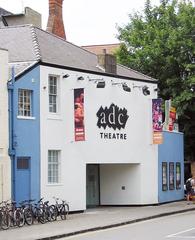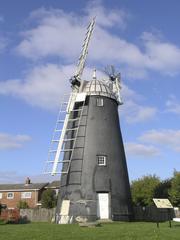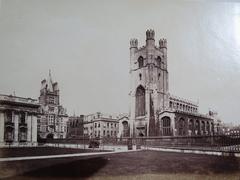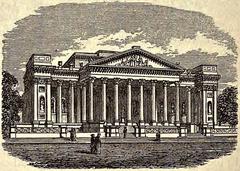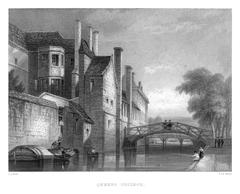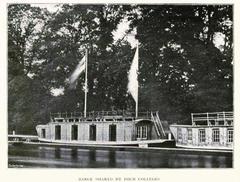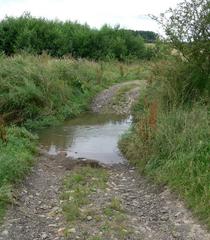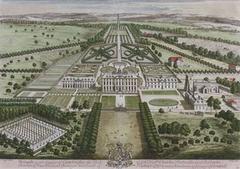Anstey Hall Cambridge, United Kingdom: A Comprehensive Visitor and Historical Guide
Date: 03/07/2025
Introduction
Anstey Hall, located in Trumpington, Cambridge, stands as one of England’s most distinguished examples of a Grade II* listed country house. Dating back to the early 17th century, Anstey Hall has evolved through centuries of architectural, cultural, and social change, making it a key heritage landmark in the Cambridge area. Today, the Hall functions as a boutique hotel and event venue, while ongoing conservation and development debates highlight the broader challenges of sustaining historic estates in the modern era. This guide provides a detailed overview of Anstey Hall’s history, visiting information, ticketing, accessibility, and the latest on conservation proposals, ensuring you make the most of your visit to this remarkable Cambridge site (Historic England; Capturing Cambridge; Cambridge Independent).
Table of Contents
- Historical Overview
- Visiting Anstey Hall: Practical Information
- Architectural Features and Heritage Status
- Conservation, Community, and Future Prospects
- Nearby Cambridge Attractions
- FAQs
- Plan Your Visit
- References
Historical Overview
Early Origins and Medieval Foundations
Anstey Hall is built on the site of a medieval manor, with the earliest known construction attributed to the Bacchus family around 1600. Edmund Bacchus’s tenure marked the estate’s shift from medieval to early modern architecture, setting the stage for later transformations (Historic England; Capturing Cambridge).
The Thompson Era: 17th Century Rebuilding
In 1637, James Thompson acquired the property, and substantial rebuilding occurred under Anthony Thompson around 1685. The resulting late Stuart style core remains the heart of the current Hall (The DiCamillo Companion).
The Anstey and Foster Families
Ownership passed to the Anstey family in the mid-18th century, and later, the Foster family in the 1840s. The Fosters, prominent local bankers, oversaw significant Victorian expansions, including the ornate lodge and gate piers built in 1865 (Historic England; Capturing Cambridge).
20th Century: War, Science, and Institutional Use
During WWII, the grounds were requisitioned for military purposes. In 1950, Anstey Hall was sold to the Ministry of Agriculture and became the Plant Breeding Research Institute, famed for developing the Maris Piper and Maris Peer potato varieties (Trumpington Local History Group; Historic England).
Late 20th Century Onwards
In 1998, John de Bruyne purchased Anstey Hall, converting it into a boutique hotel and events space, a role it continues to play today (Anstey Hall Hotel).
Visiting Anstey Hall: Practical Information
Opening Hours
- General Access: Anstey Hall primarily functions as a hotel and event venue. Public access is generally available for guests, event attendees, or during scheduled tours and open days.
- Suggested Visiting Hours: Thursday–Sunday, 10:00 AM–5:00 PM; check the official website for up-to-date access times and special events.
Tickets and Booking
- Admission: There is no standard ticketing for casual visits. Tickets are required for specific events or guided tours.
- Sample Event Ticket Prices: Adults £8, Seniors/Students £6, Under 16s Free (prices may vary; confirm via the official site).
- Booking: Advance booking is highly recommended for tours and events.
Accessibility
- General Accessibility: Most public areas and gardens are accessible to wheelchair users. Assistance dogs are welcome and accessible restrooms are available.
- Note: Some historic areas may have limited access; contact the Hall for individual needs or group arrangements.
Travel and Parking
- By Car: Free on-site parking for guests and event attendees.
- By Public Transport: Local buses from Cambridge city centre stop near Maris Lane (Trumpington).
- Cycling: Secure bike storage available.
Accommodation
- Hotel Facilities: Anstey Hall offers a range of boutique rooms and suites suitable for families, business, or leisure stays. Breakfast and lounge bars are available. Contact the hotel for bookings and special requests (Anstey Hall Hotel).
Architectural Features and Heritage Status
- Listing: Anstey Hall is Grade II* listed, placing it among the top 5.5% of English heritage buildings. The lodge and gate piers are separately Grade II listed (Historic England).
- Style: The Hall combines Jacobean and Victorian elements, including a 17th-century core, High Victorian Gothic lodge and gates (1865), and landscaped parkland.
- Conservation Area: The estate is within the Trumpington Conservation Area, ensuring statutory protection for its historic landscape and architectural setting.
Conservation, Community, and Future Prospects
Current Conservation and Development Debate
Anstey Hall’s future is the subject of ongoing local and national discussion. Owner John de Bruyne and Trumpington Investments Ltd. have proposed constructing an 87-unit retirement community within the grounds to fund an estimated £1.1 million restoration and secure long-term maintenance (Cambs News). While developers argue the plan’s public benefits and sustainability, Cambridge City Council and Historic England have raised concerns about design, heritage impact, and loss of protected green space (Cambridge Independent).
Heritage vs. Modern Needs
This debate illustrates the broader tension between preserving historic estates and addressing contemporary social needs. The proposal’s outcome, currently under appeal, will influence Anstey Hall’s role as a community, cultural, and hospitality venue for years to come.
Community Role
Beyond its architectural significance, Anstey Hall aspires to serve as a vibrant community hub and cultural centre, including art exhibitions, educational outreach, and charity partnerships, supported by professional curators with university affiliations (Cambridge Independent).
Nearby Cambridge Attractions
Enhance your visit to Anstey Hall by exploring these local highlights:
- Trumpington Meadows Nature Reserve
- Denny Abbey and Farmland Museum
- University of Cambridge Heritage Trails
- Cambridge University Botanic Garden
- Kettle’s Yard contemporary art gallery
FAQs
Q: What are Anstey Hall’s visiting hours?
A: Generally Thursday–Sunday, 10:00 AM–5:00 PM, but always confirm via the official website.
Q: How do I book tickets or tours?
A: Visit the official website or contact reception directly.
Q: Is Anstey Hall accessible for people with disabilities?
A: Main areas and restrooms are accessible; contact ahead for specific requirements.
Q: Are guided tours available?
A: Guided tours are occasionally offered and can be arranged for groups by appointment.
Q: Will the proposed retirement community affect public access?
A: If approved, there may be temporary restrictions during construction, but plans include improved public cultural facilities.
Plan Your Visit
- Book Accommodation or Tours: Anstey Hall Hotel Official Site
- Stay Updated: Download the free Audiala app for real-time alerts, historical tours, and exclusive content.
- Travel Tips: Ample parking, good public transport links, and proximity to Cambridge’s major attractions make Anstey Hall an ideal base for exploring the city.
Suggested Itineraries:
- Combine a morning tour of Anstey Hall with a Cambridge Heritage Trail walk.
- Attend a seasonal event at the Hall, then visit nearby Trumpington Meadows or the Botanic Garden.
References
- Historic England Listing for Anstey Hall, 2024
- Capturing Cambridge, Anstey Hall History, 2024
- Cambridge Independent, Future of Anstey Hall in Trumpington, 2024
- Cambs News, Battle Over Anstey Hall Development, 2024
- Anstey Hall Hotel Official Website, 2024
Anstey Hall embodies the enduring dialogue between past and present, blending centuries of history with ongoing community engagement and modern hospitality. Plan your visit today and become part of the Hall’s evolving story.
